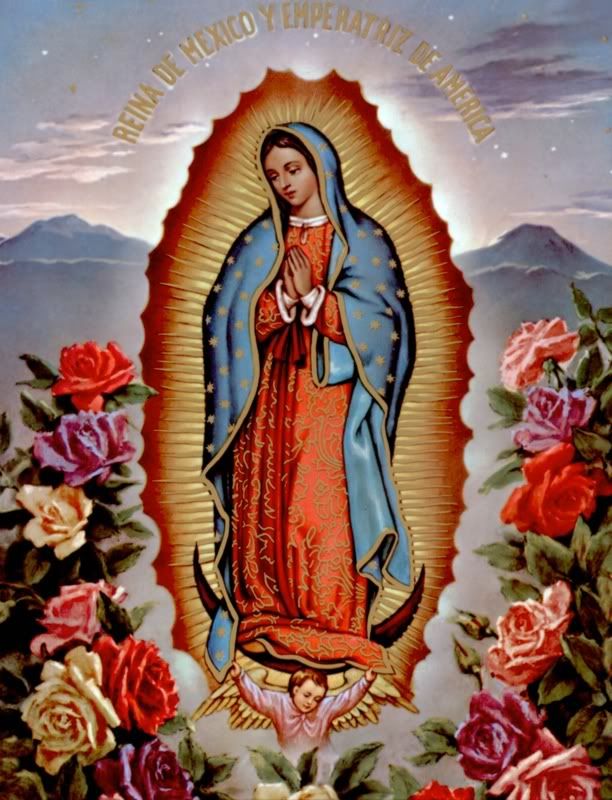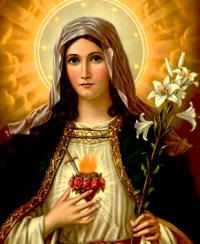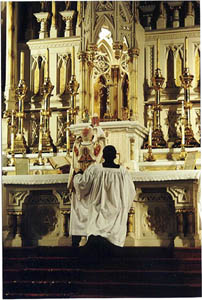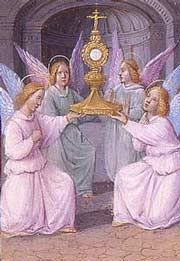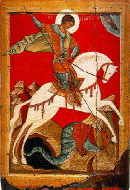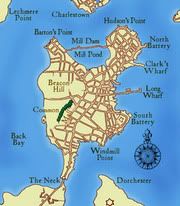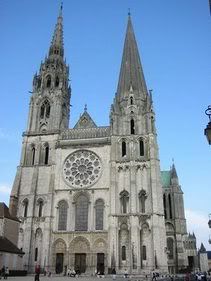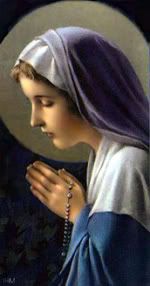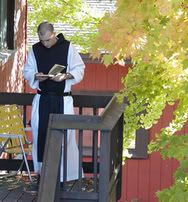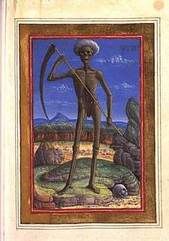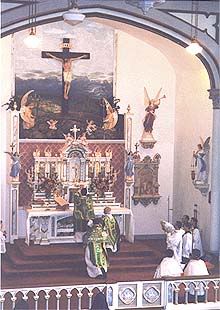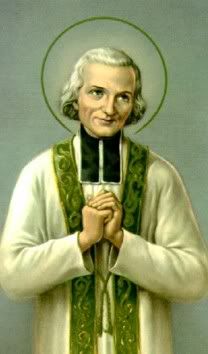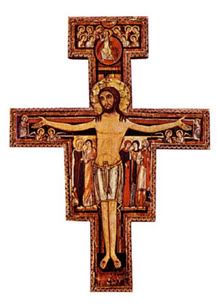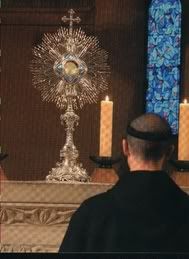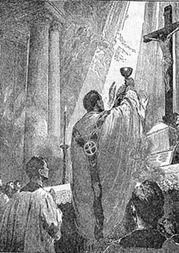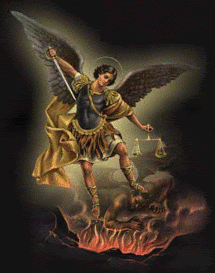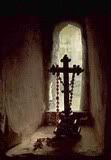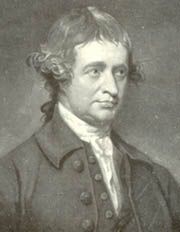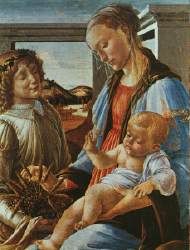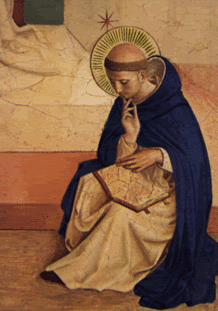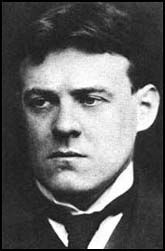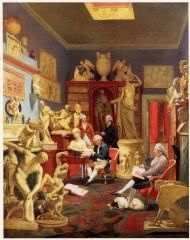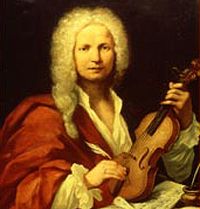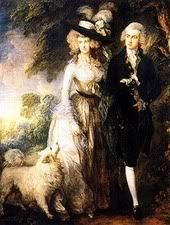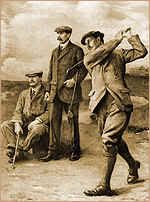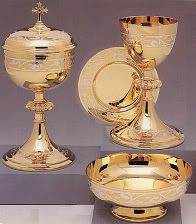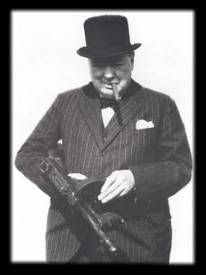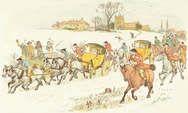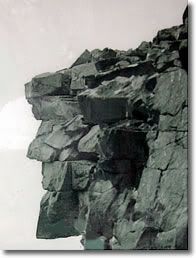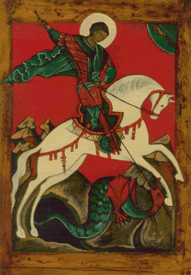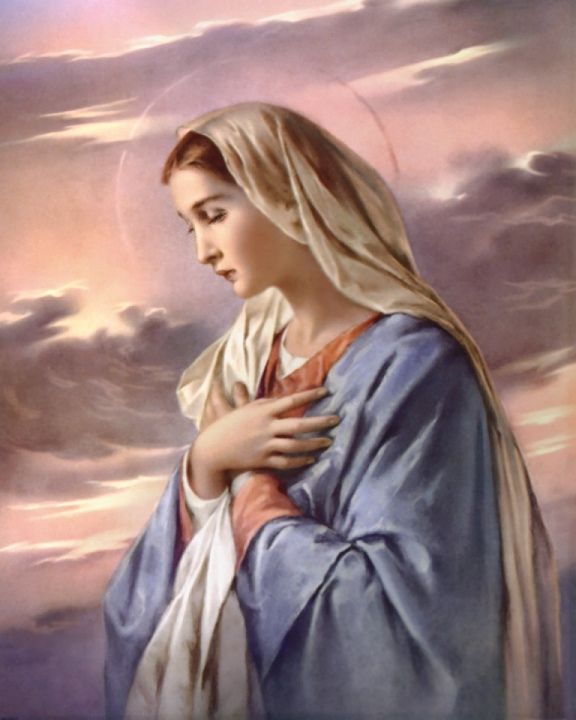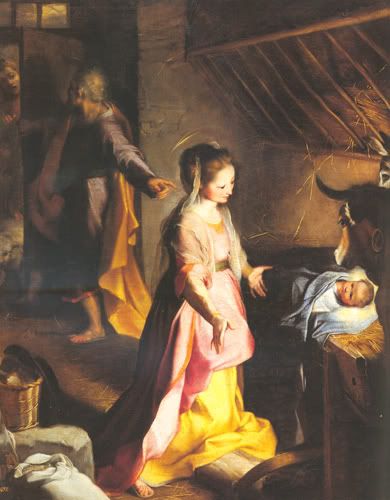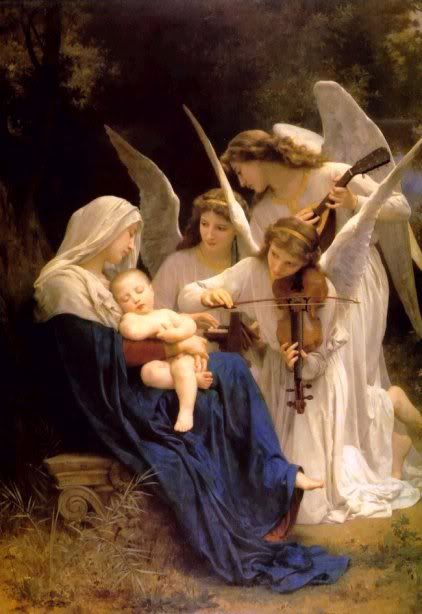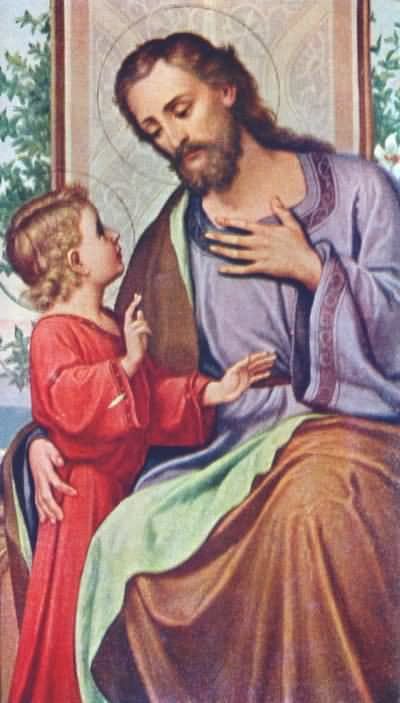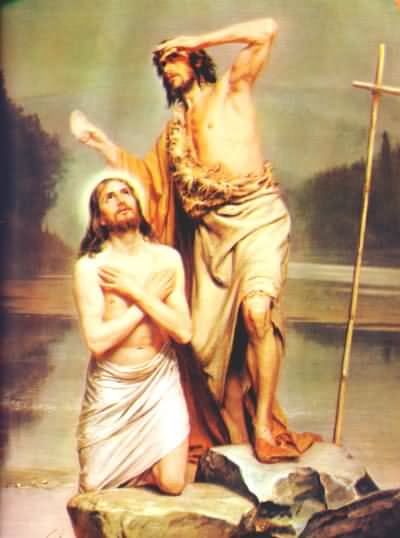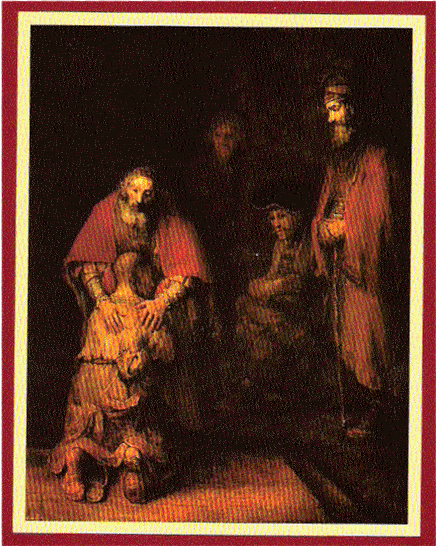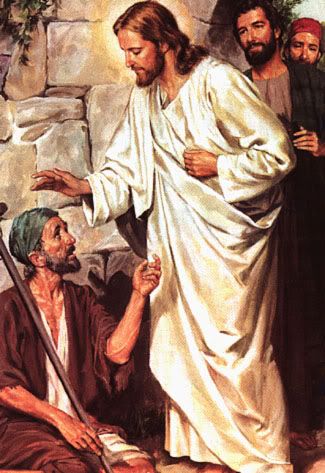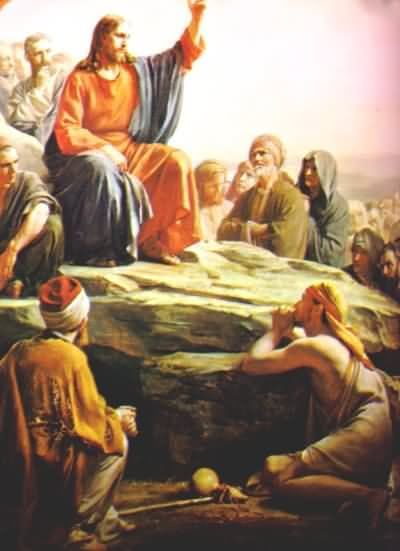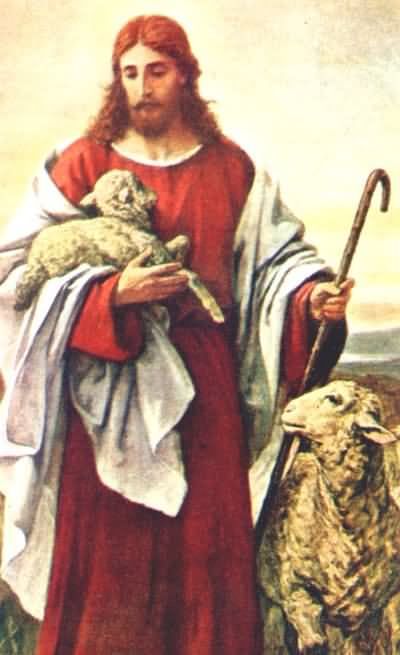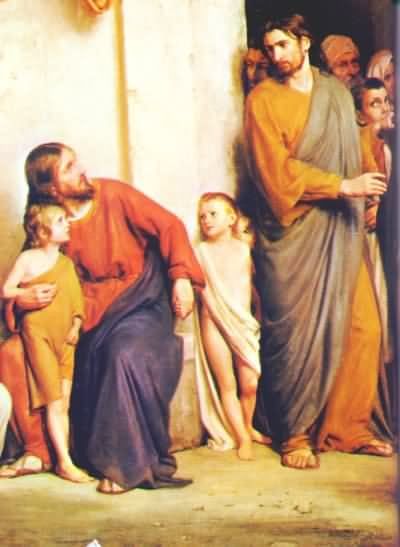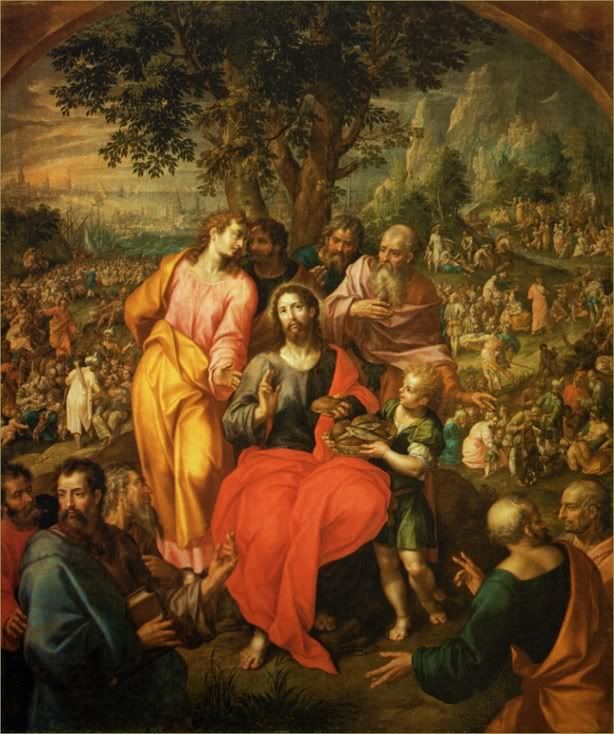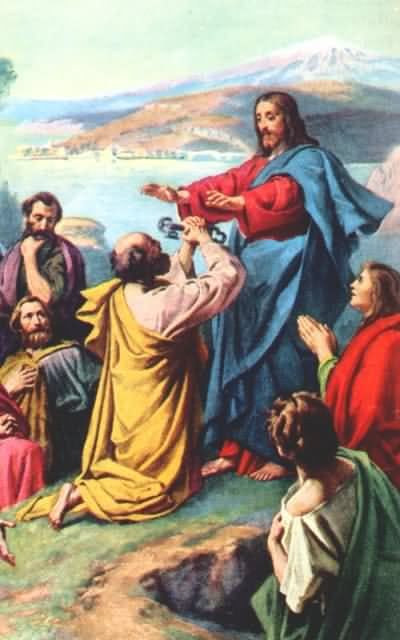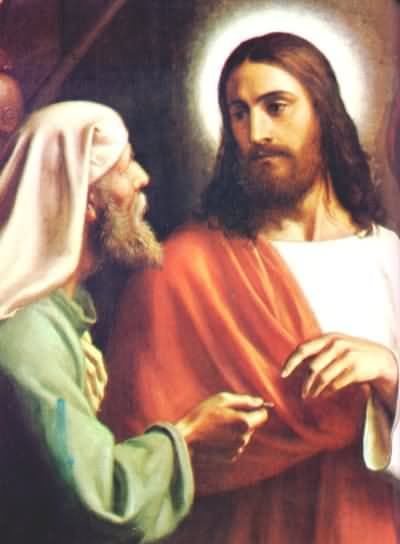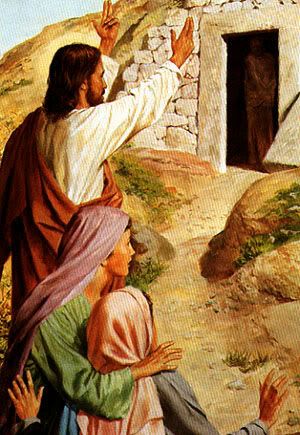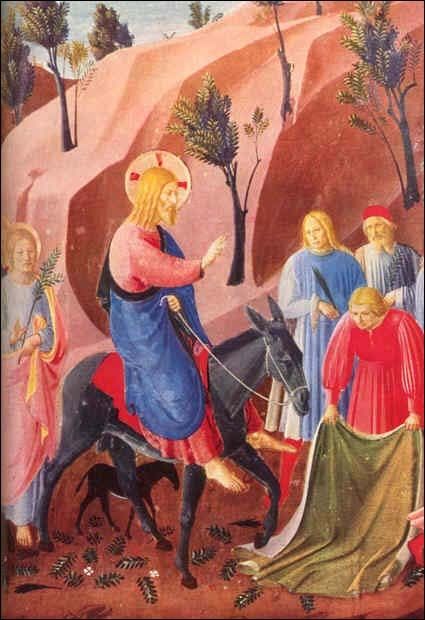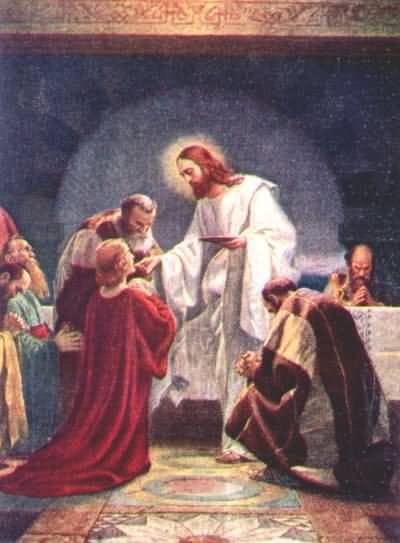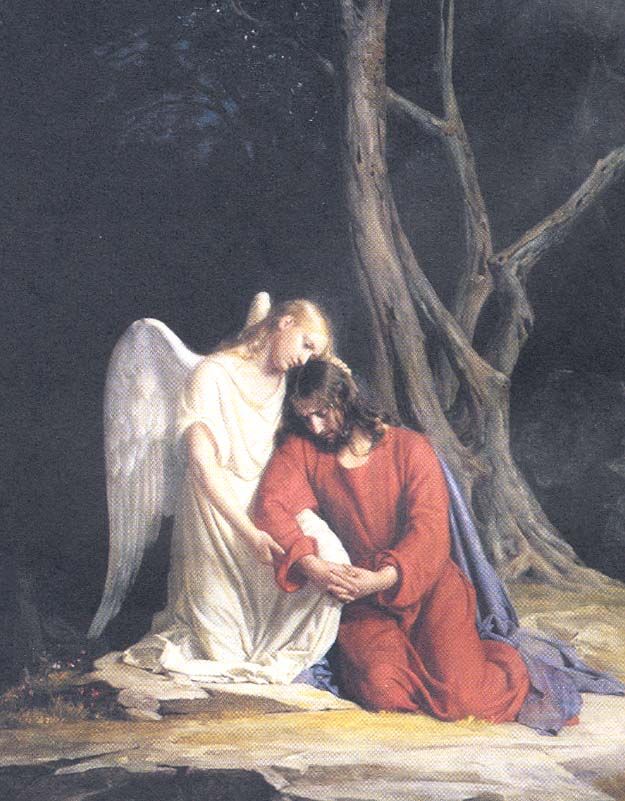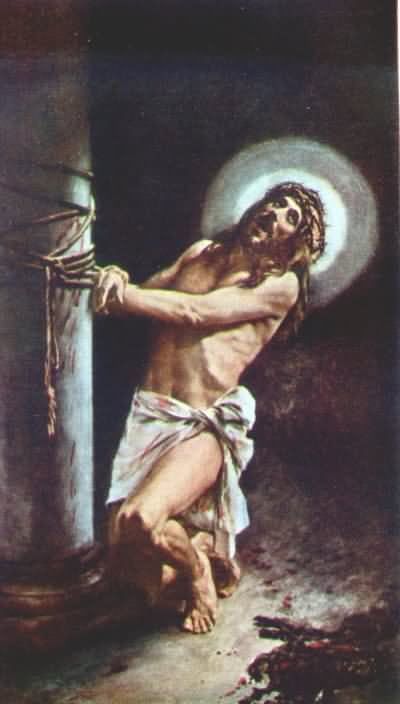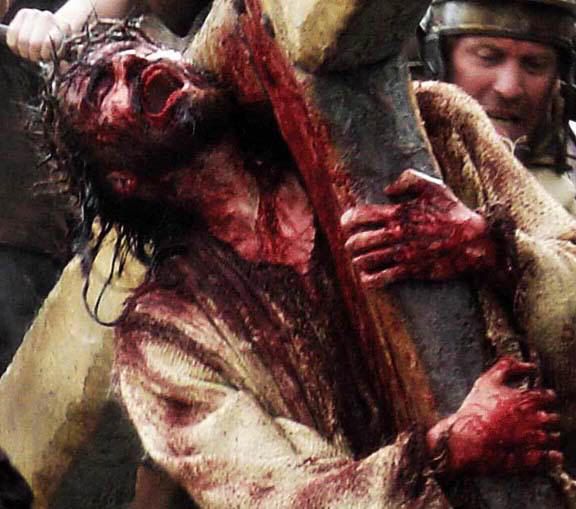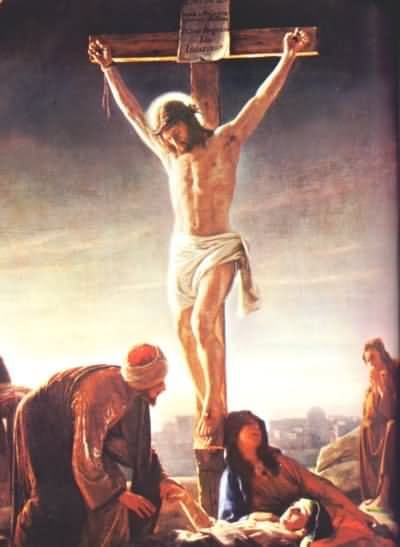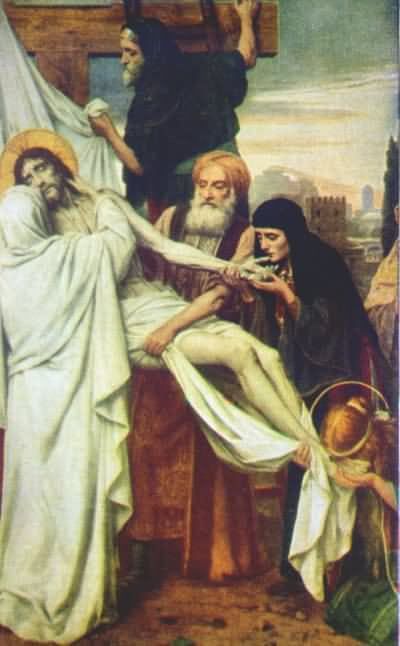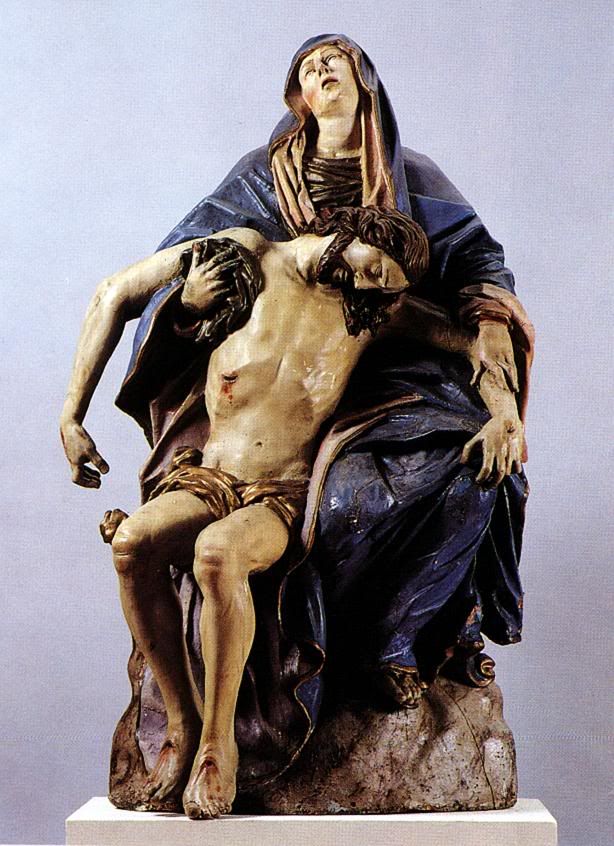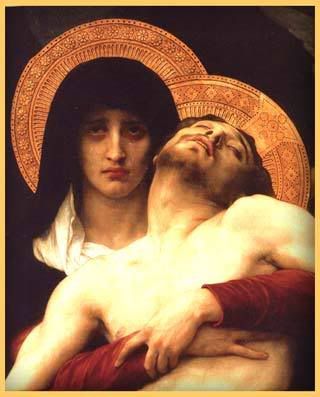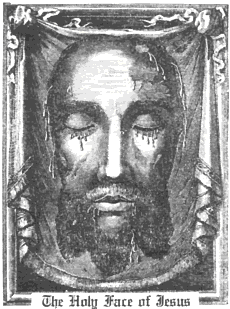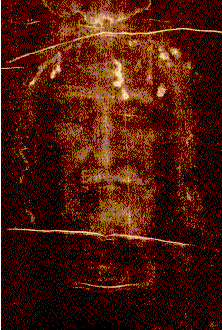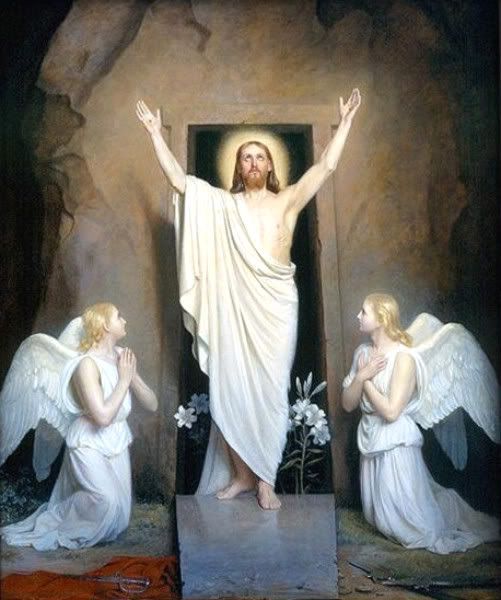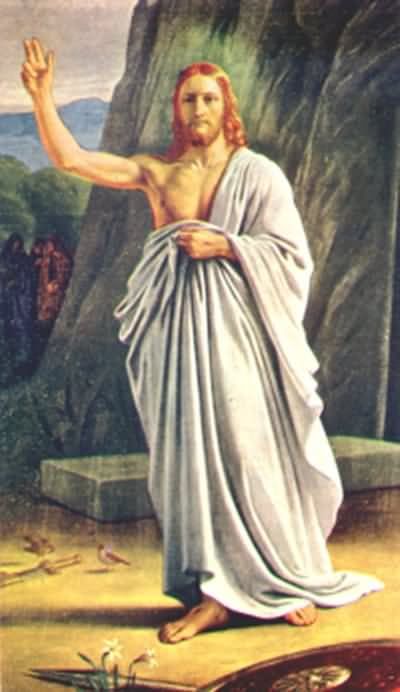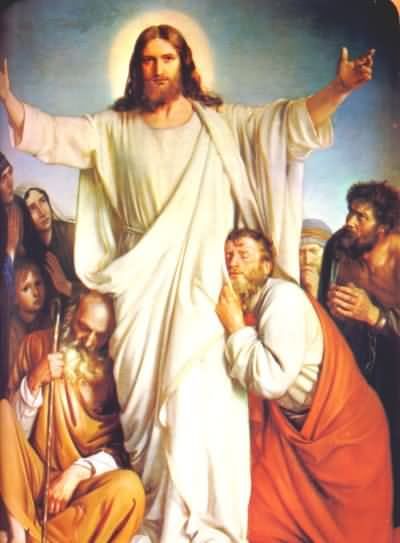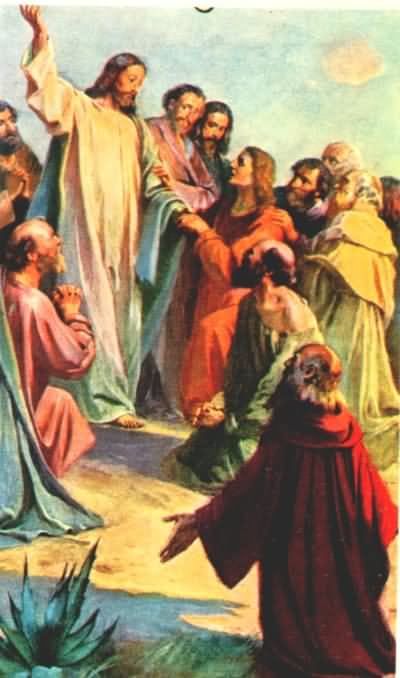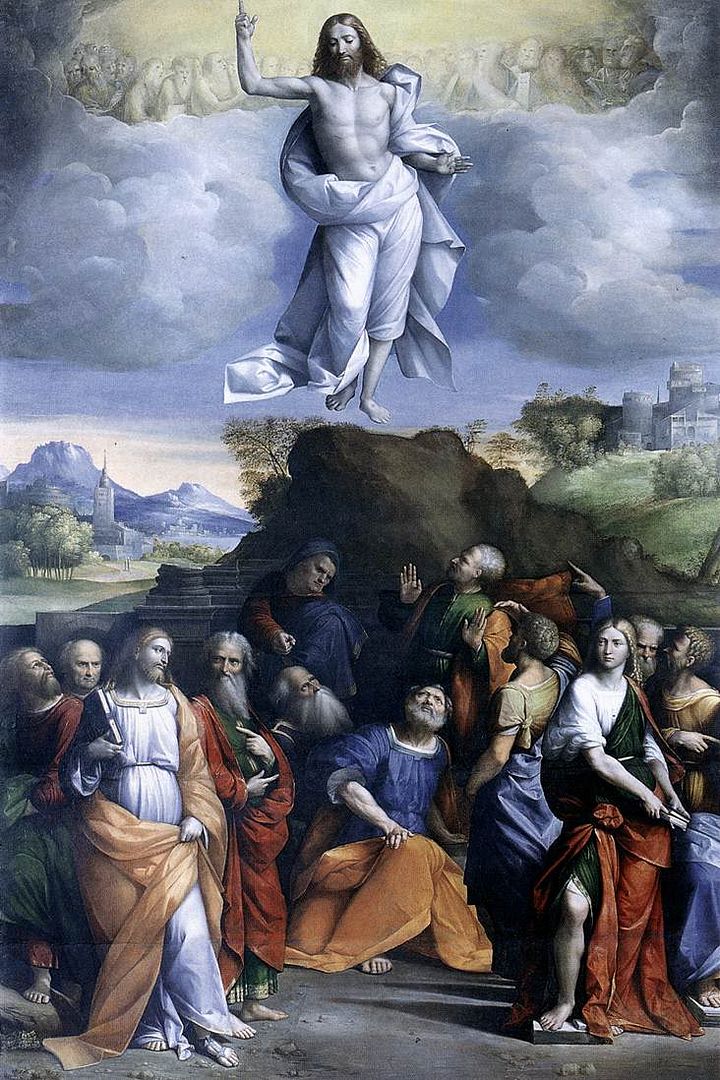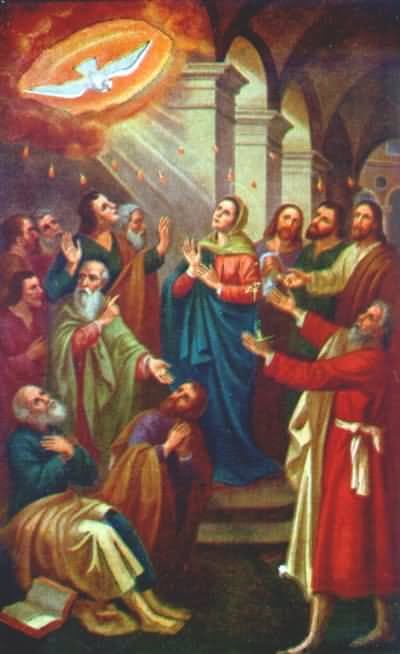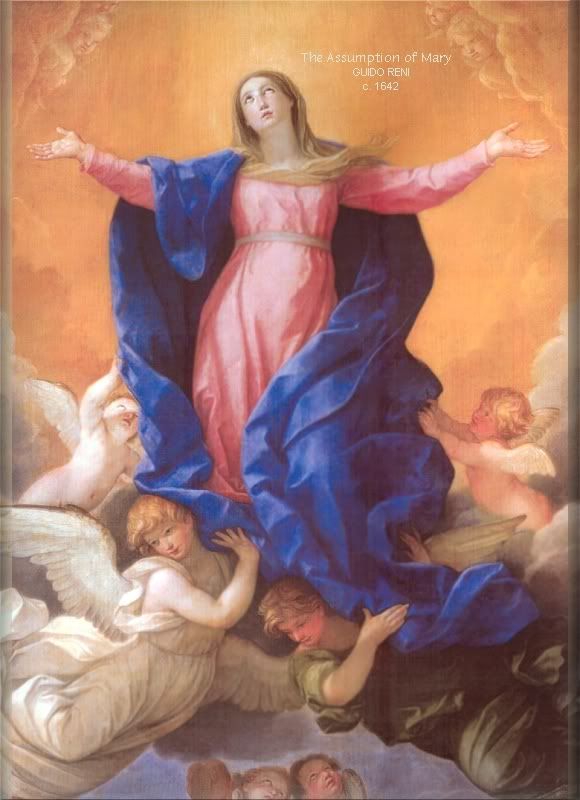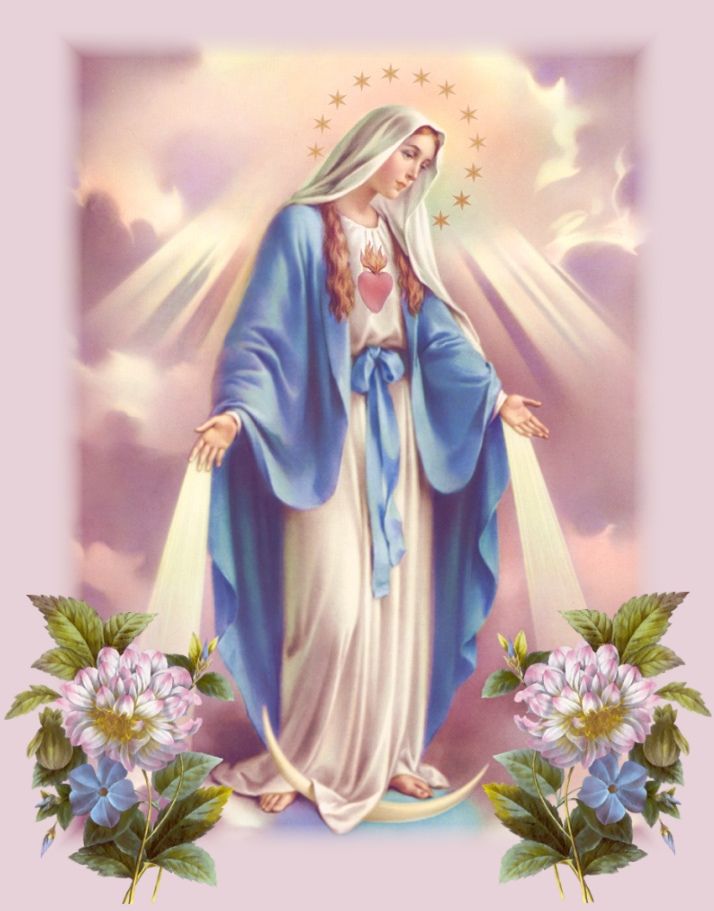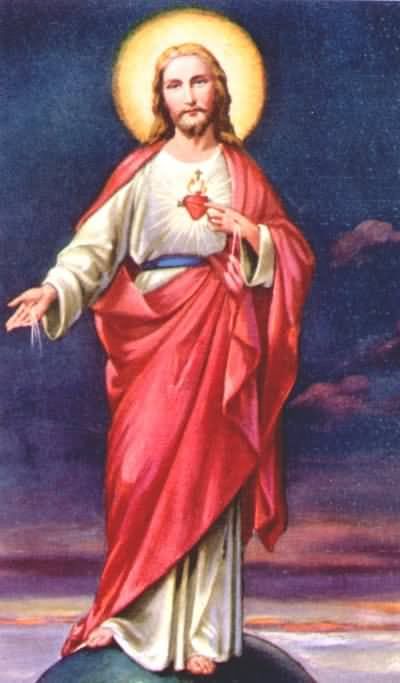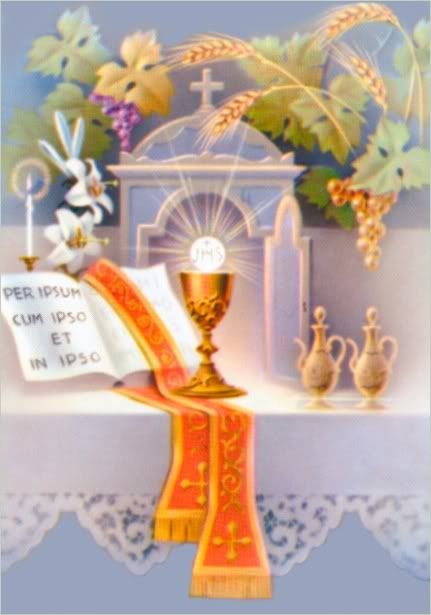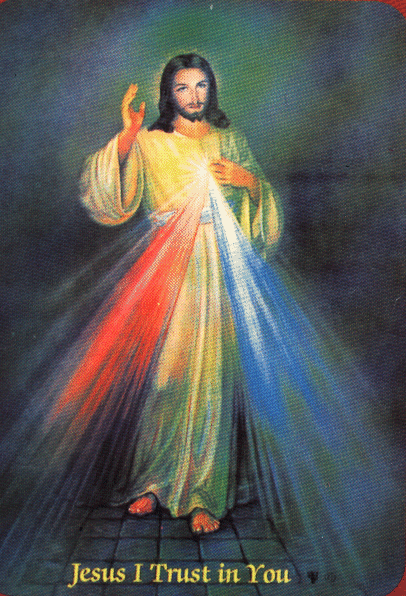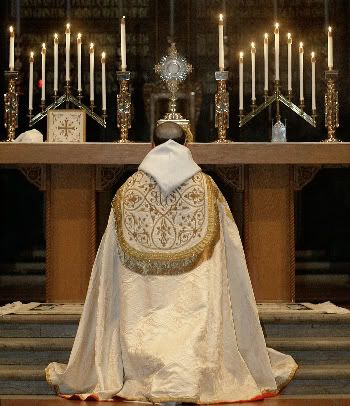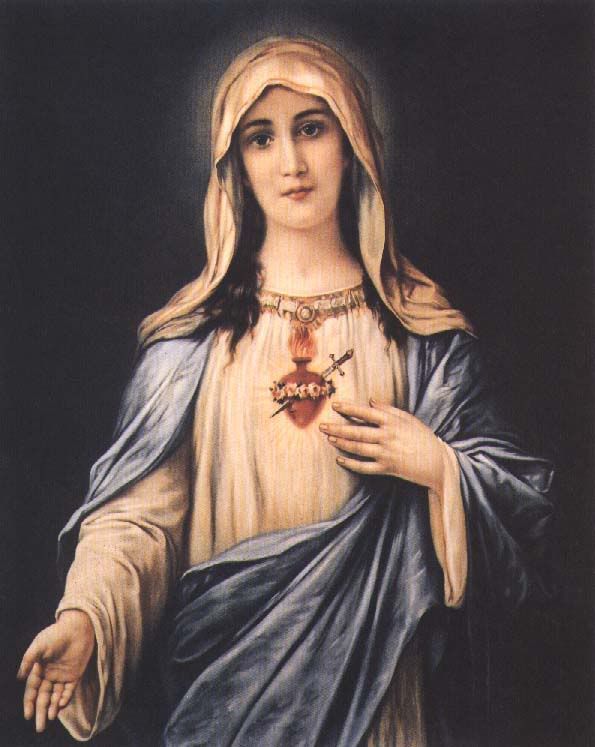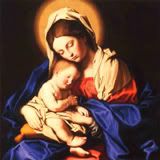Wednesday, December 13, 2017
Saint Lucia, Virgin & Martyr
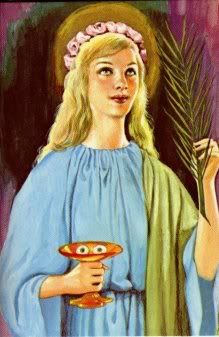
From The Golden Legend
Santa Lucia customs. Scroll down for lots of links.
St. Lucia's Saffron Bread
On December 13 people in Sweden celebrate St. Lucy's Day. They remember how Lucia, a young girl, brought food to persecuted Christians hiding in the catacombs in Rome during the time of Emperor Diocletian. In order that she could carry the food and see where she was going in the dark, Lucia wore candles on her head.
On St. Lucy's Day each year by tradition one of the daughters of the family is chosen to be St. Lucy. She gets up early and takes coffee and 'Lucia' buns (Saffronsbrod) to the rest of the family who are still in bed. She dresses in a white robe with a scarlet sash and wears on her head a crown of green leaves with five candles in it. Sometimes she is escorted by boys dressed in long white shirts and pointed hats, called star boys.

· 2 tsp sugar
· 1/2 cup warm water
· 1 tsp saffron powder
· 8 cups strong plain flour (all purpose flour)
· 4 tsp salt
· 1/2 cup butter
· 3/4 cup castor (table) sugar
· 1/4 cup raisins
· 1 tsp ground cardamom
· 1 1/2 cups lukewarm milk
· beaten egg for brushing
Topping:
· 1 tbsp chopped almonds
· 1 tbsp coarsely crushed cube sugar
DIRECTIONS
1. Dissolve sugar in the warm water and add yeast.
2. Mix the saffron powder with 1 tbsp hot water.
3. Leave about 20 minutes, until frothy.
4. Sift flour and salt and rub in the butter. Add castor sugar, cardamom and raisins.
5. Mix to a dough with the yeast mixture and milk and add saffron.
6. Knead thoroughly, return to bowl, cover and allow to rise until doubled in bulk.
7. Shape into small buns, put on a greased baking tray until doubled in size. Brush with beaten egg, sprinkle with coarse sugar and almonds.
8. Bake in oven at 400 degrees for 10-15 minutes or until golden brown.
9. Cool on a cooling tray.
10. Serve fresh with coffee.

Tuesday, December 12, 2017
Our Blessed Lady Of Guadalupe
Sunday, December 10, 2017
The Second Sunday of Advent

From The Liturgical Year, by Abbot Prosper Gueranger, OSB:
The History Of Advent
The name Advent (From the Latin word Adventus, which signifies a coming) is applied, in the Latin Church, to that period of the year, during which the Church requires the faithful to prepare for the celebration of the feast of Christmas, the anniversary of the birth of Jesus Christ. The mystery of that great day had every right to the honour of being prepared for by prayer and works of penance; and, in fact, it is impossible to state, with any certainty, when this season of preparation (which had long been observed before receiving its present name of Advent) was first instituted. It would seem, however, that its observance first began in the west, since it is evident that Advent could not have been looked on as a preparation for the feast of Christmas, until that feast was definitively fixed to the twenty-fifth of December; which was done in the east only towards the close of the fourth century; whereas it is certain that the Church of Rome kept the feast on that day at a much earlier period.
We must look upon Advent in two different lights: first, as a time of preparation, properly so called, for the birth of our Saviour, by works of penance: and secondly, as a series of ecclesiastical Offices drawn up for the same purpose. We find, as far back as the fifth century, the custom of giving exhortations to the people in order to prepare them for the feast of Christmas. We have two sermons of Saint Maximus of Turin on this subject, not to speak of several others which were formerly attributed to St. Ambrose and St. Augustine, but which were probably written by St. Cesarius of Aries. If these documents do not tell us what was the duration and what the exercises of this holy season, they at least show us how ancient was the practice of distinguishing the time of Advent by special sermons. Saint Ivo of Chartres, St. Bernard, and several other doctors of the eleventh and twelfth centuries, have left us set sermons de Adventu Domini, quite distinct from their Sunday homilies on the Gospels of that season. In the capitularia of Charles the Bald, in 846, the bishops admonish that prince not to call them away from their Churches during Lent or Advent, under pretext of affairs of the State or the necessities of war, seeing that they have special duties to fulfil, and particularly that of preaching during those sacred times.
The oldest document in which we find the length and exercises of Advent mentioned with anything like clearness, is a passage in the second book of the History of the Franks by St. Gregory of Tours, where he says that St. Perpetuus, one of his predecessors, who held that see about the year 480, had decreed a fast three times a week, from the feast of St. Martin until Christmas. It would be impossible to decide whether St. Perpetuus, by his regulations, established a new custom, or merely enforced an already existing law. Let us, however, note this interval of forty, or rather of forty-three days, so expressly mentioned, and consecrated to penance, as though it were a second Lent, though less strict and severe than that which precedes Easter.
Later on, we find the ninth canon of the first Council of Macon, held in 582, ordaining that during the same interval between St. Martin's day and Christmas, the Mondays, Wednesdays, and Fridays, should be fasting days, and that the Sacrifice should be celebrated according to the lenten rite. Not many years before that, namely in 567, the second Council of Tours had enjoined the monks to fast from the beginning of December till Christmas. This practice of penance soon extended to the whole forty days, even for the laity: and it was commonly called St. Martin's Lent. The capitularia of Charlemagne, in the sixth book, leave us no doubt on the matter; and Rabanus Maurus, in the second book of his Institution of clerics, bears testimony to this observance. There were even special rejoicings made on St. Martin's feast, just as we see them practised now at the approach of Lent and Easter.
The obligation of observing this Lent, which, though introduced so imperceptibly, had by degrees acquired the force of a sacred law, began to be relaxed, and the forty days from St. Martin's day to Christmas were reduced to four weeks. We have seen that this fast began to be observed first in France; but thence it spread into England, as we find from Venerable Bede's history; into Italy, as appears from a diploma of Astolphus, king of the Lombards, dated 753; into Germany, Spain, &c., of which the proofs may be seen in the learned work of Dom Martene, On the ancient rites of the Church. The first allusion to Advent's being reduced to four weeks is to be found in the ninth century, in a letter of Pope St. Nicholas I to the Bulgarians. The testimony of Ratherius of Verona, and of Abbo of Fleury, both writers of the tenth century, goes also to prove that, even then, the question of reducing the duration of the Advent fast by one-third was seriously entertained. It is true that St. Peter Damian, in the eleventh century, speaks of the Advent fast as still being for forty days; and that St. Louis, two centuries later, kept it for that length of time; but as far as this holy king is concerned, it is probable that it was only his own devotion which prompted him to this practice.
The discipline of the Churches of the west, after having reduced the time of the Advent fast, so far relented, in a few years, as to change the fast into a simple abstinence; and we even find Councils of the twelfth century, for instance Selingstadt in 1122, and Avranches in 1172, which seem to require only the clergy to observe this abstinence. The Council of Salisbury, held in 1281, would seem to expect none but monks to keep it. On the other hand (for the whole subject is very confused, owing, no doubt, to there never having been any uniformity of discipline regarding it in the western Church), we find Pope Innocent III, in his letter to the bishop of Braga, mentioning the custom of fasting during the whole of Advent, as being at that time observed in Rome; and Durandus, in the same thirteenth century, in his Rational on the Divine Offices, tells us that, in France, fasting was uninterruptedly observed during the whole of that holy time.
This much is certain, that, by degrees, the custom of fasting so far fell into disuse, that when, in 1362, Pope Urban V endeavoured to prevent the total decay of the Advent penance, all he insisted upon was that all the clerics of his court should keep abstinence during Advent, without in any way including others, either clergy or laity, in this law. St. Charles Borromeo also strove to bring back his people of Milan to the spirit, if not to the letter, of ancient times. In his fourth Council, he enjoins the parish priests to exhort the faithful to go to Communion on the Sundays, at least, of Lent and Advent; and afterwards addressed to the faithful themselves a pastoral letter, in which, after having reminded them of the dispositions wherewith they ought to spend this holy time, he strongly urges them to fast on the Mondays, Wednesdays, and Fridays, at least, of each week in Advent. Finally, Pope Benedict XIV, when archbishop of Bologna, following these illustrious examples) wrote his eleventh Ecclesiastical Institution for the purpose of exciting in the minds of his diocesans the exalted idea which the Christians of former times had of the holy season of Advent, and of removing an erroneous opinion which prevailed in those parts, namely, that Advent concerned religious only and not the laity. He shows them that such an opinion, unless it be limited to the two practices of fasting and abstinence, is, strictly speaking, rash and scandalous, since it cannot be denied that, in the laws and usages of the universal Church, there exist special practices, having for their end to prepare the faithful for the great feast of the birth of Jesus Christ.
The Greek Church still continues to observe the fast of Advent, though with much less rigour than that of Lent. It consists of forty days, beginning with November 14, the day on which this Church keeps the feast of the apostle St. Philip. During this entire period, the people abstain from flesh-meat, butter, milk, and eggs; but they are allowed, which they are not during Lent, fish, oil, and wine. Fasting, in its strict sense, is binding only on seven out of the forty days; and the whole period goes under the name of St. Philip's Lent. The Greeks justify these relaxations by this distinction: that the Lent before Christmas is, so they say, only an institution of the monks, whereas the Lent before Easter is of apostolic institution.
But, if the exterior practices of penance which formerly sanctified the season of Advent, have been, in the western Church, so gradually relaxed as to have become now quite obsolete except in monasteries, the general character of the liturgy of this holy time has not changed; and it is by their zeal in following its spirit, that the faithful will prove their earnestness in preparing for Christmas.
The liturgical form of Advent as it now exists in the Roman Church, has gone through certain modifications. St. Gregory seems to have been the first to draw up the Office for this season, which originally included five Sundays, as is evident from the most ancient sacramentaries of this great Pope. It even appears probable, and the opinion has been adopted by Amalarius of Metz, Berno of Reichnau, Dom Martene, and Benedict XIV, that St. Gregory originated the ecclesiastical precept of Advent, although the custom of devoting a longer or shorter period to a preparation for Christmas has been observed from time immemorial, and the abstinence and fast of this holy season first began in France. St. Gregory therefore fixed, for the Churches of the Latin rite, the form of the Office for this Lent-like season, and sanctioned the fast which had been established, granting a certain latitude to the several Churches as to the manner of its observance.
The sacramentary of St. Gelasius has neither Mass nor Office of preparation for Christmas; the first we meet with are in the Gregorian sacramentary, and, as we just observed, these Masses are five in number. It is remarkable that these Sundays were then counted inversely, that is, the nearest to Christmas was called the first Sunday, and so on with the rest. So far back as the ninth and tenth centuries, these Sundays were reduced to four, as we learn from Amalarius St. Nicholas I, Berno of Reichnau, Ratherius of Verona, &c., and such also is their number in the Gregorian sacramentary of Pamelius, which appears to have been transcribed about this same period. From that time, the Roman Church has always observed this arrangement of Advent, which gives it four weeks, the fourth being that in which Christmas day falls, unless December 25 be a Sunday. We may therefore consider the present discipline of the observance of Advent as having lasted a thousand years, at least as far as the Church of Rome is concerned; for some of the Churches in France kept up the number of five Sundays as late as the thirteenth century.
The Ambrosian liturgy, even to this day, has six weeks of Advent; so has the Gothic or Mozarabic missal. As regards the Gallican liturgy, the fragments collected by Dom Mabillon give us no information; but it is natural to suppose with this learned man, whose opinion has been confirmed by Dom Martene, that the Church of Gaul adopted, in this as in so many other points, the usages of the Gothic Church, that is to say, that its Advent consisted of six Sundays and six weeks.
With regard to the Greeks, their rubrics for Advent are given in the Menaea, immediately after the Office for November 14. They have no proper Office for Advent, neither do they celebrate during this time the Mass of the Presanctified, as they do in Lent. There are only in the Offices for the saints, whose feasts occur between November 14 and the Sunday nearest Christmas, frequent allusions to the birth of the Saviour, to the maternity of Mary, to the cave of Bethlehem, &c. On the Sunday preceding Christmas, in order to celebrate the expected coming of the Messias, they keep what they call the feast of the holy fathers, that is the commemoration of the saints of the old Law. They give the name of Ante-Feast of the Nativity to December 20, 21, 22, and 23; and although they say the Office of several saints on these four days, yet the mystery of the birth of Jesus pervades the whole liturgy.
